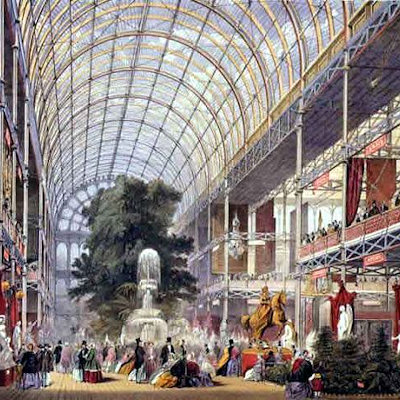
Like us on Facebook
PLACE NAMES


 
|
|
Crystal Palace
|

|
|
Crystal Palace is a residential area in south London, England, within the London Boroughs of Bromley, Croydon, Lambeth and Southwark. It is named after the former local landmark, the Crystal Palace, which stood in the area from 1854 to 1936.
The area is located approximately eight miles (13 km) south east of Charing Cross and includes one of the highest points in London, at 367 feet (112 m), offering views over the capital. The area has no defined boundaries and straddles the convergence of five London boroughs and three postal districts, although an electoral ward named Crystal Palace and Crystal Palace Park are entirely contained within the London Borough of Bromley. It is contiguous with Anerley, Dulwich Wood, Gipsy Hill, Penge, South Norwood, Sydenham and Upper Norwood.
The district was a natural oak forest until development began in the 19th century, and before the arrival of the Crystal Palace the area was known as Sydenham Hill. The Norwood Ridge and an historic oak tree were used to mark parish boundaries. Today, the area is represented by three different parliamentary constituencies, four London Assembly constituencies and fourteen local authority councillors.
After the Crystal Palace had burned down in 1936, the site of the building and its grounds became Crystal Palace Park, which is the location of the National Sports Centre, containing an athletics track, stadium and other sports facilities. Crystal Palace Park has also been the setting for a number of concerts and films, including scenes from The Italian Job and The Pleasure Garden. Two television transmitter masts make the district a landmark location, visible from many parts of Greater London. Local landmarks include the Crystal Palace Triangle, a shopping district made up of three streets forming a triangle; Westow Park, a smaller park that lies off the triangle to the south west of Crystal Palace Park; and the Stambourne Woodland Walk.
A pneumatic railway was briefly trialled in the area in 1864. Once the railways had arrived, Crystal Palace was eventually served by two railway stations, the high level and low level stations, built to handle the volume of passengers visiting the Crystal Palace. After the palace was destroyed by fire, and with railway travel declining in the UK more generally, passenger numbers fell and the high level station was closed in 1954 and demolished 7 years later. Rail services gradually declined, and for a period in the 1960s and 1970s there were plans to construct an urban motorway through the area as part of the London Ringways plan. More recently, rail travel has seen a resurgence in Crystal Palace, with rising passenger numbers, additional London Overground services stopping at the station, a major station redevelopment in 2012 and proposals to extend the Croydon Tramlink service to the railway and bus stations. In 2016, Crystal Palace was named as one of the best places to live in London.
|
 Feel free to Email me any additions or corrections Feel free to Email me any additions or corrections
LINKS AVAILABLE TO YOUR SITE
| |





